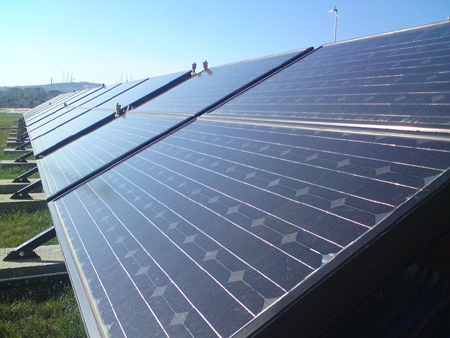The recent uptick in large scale solar power plants being approved in California is not something one can easily miss. The Golden State is apparently having a gold rush of sorts around this form of renewable power, with a stated goal of wanting to have approved by the end of 2010 nine solar thermal power facilities with a total potential energy capacity of 4,300 MW.
Part of the motivation of California around this seems to be that state’s Renewables Portfolio Standard, which requires its electricity utility companies to use renewable energy to produce 20 percent of their power by 2010 and 33 percent by 2020. California is also trying to make itself into the preeminent clean energy hub in the nation even as Congress falters on pushing through significant renewable power legislation. What will California’s leading by example in this area garner it? To find out, we turned to Dave Cavanaugh, a senior analyst on the topic with cleantech market research firm Pike Research for some answers.

EarthTechling (ET): California is in a wave of approving solar thermal plants right now. Can you give a brief explanation of what exactly solar thermal technology is.
Dave Cavanaugh: Fundamentally, solar thermal in this context should be thought of as large, utility-scale concentrated solar thermal (CST) to distinguish it from small rooftop water heating systems that are also often called solar thermal. Basically, CST systems concentrate solar radiation, heat a fluid with the concentrated radiation, generate steam with the heat, and generate electrical power using a steam turbine. Several types of CST systems are gaining traction, but the two most common types involve: 1) long strings of parabolic trough mirrors that focus radiation on a tube in the center of the trough and 2) a huge circular array of mirrors that focus solar radiation and heat on a high central tower (a so-called “power tower”).
ET: What is the motivation behind California trying to approve these nine projects before year’s end?
Cavanaugh: California is trying to approve projects before the end of 2010 because certain US federal incentives are set to expire this year and because the state has a lofty goal of producing 20% of its power consumption from renewable sources by the end of 2010. The nine projects all total will have potential to produce over 4,300 MW of solar energy for the state’s power grid.
ET: What kind of impact will that have on California’s energy needs?
Cavanaugh: While these CST projects have the potential for generating a lot of power and would supply a significant part of California’s total power needs, we suggest that CST projects must demonstrate actual reduced power cost generation capability promised for large-scale CST plants (not demonstrations projects) in order for the state to actually enjoy a significant impact on their power needs. As importantly, constructing large CST plants and connecting them to the grid from remote locations like the California deserts may prove a daunting task and add significant cost to power delivered to major cities.

ET: Is California rushing too fast into solar energy through this process? Why or why not?
Cavanaugh: We applaud California’s push to generate 20% of power requirements by the end of 2010 and its proposal to require 33% of power generation from renewable by 2020. Implementing solar power generation at this rate is acceptable from the viewpoint of setting targets for utilities. Though meeting the 20%/2010 goal may be difficult, providing 33% of CA’s power requirements by 2020 will likely be very doable. The sticking point lies with the utilities’ ability to implement power generation from new projects on time and without substantially raising the cost of power to consumers. Currently, we believe that solar PV provides a more reliable, proven, and cost effective way to reach RPS goals.
ET: Will this aggressive push into solar impact other types of renewable energy development?
Cavanaugh: With the enormous reduction in the cost of solar PV modules in 2009 and the ability to install PV on commercial and residential rooftops, we believe that proven and more bankable PV technology has already reached grid parity in much of California and will present CST with a formidable barrier to entry in 2010 and even more so in 2011.